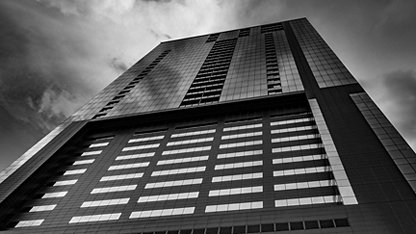On 12 April 2025, 08:00 BST, we will be disabling logins for specific member-facing platforms to improve internal processes. We expect this to finish 12 April 2025 at 17:00 BST.
Universal Studios, Los Angeles, October 2016. Not one for low-key launches, Tesla CEO Elon Musk is standing on Wisteria Lane, the former set of TV show Desperate Housewives.
The idyllic suburban houses are set up with Tesla Model X cars and Powerwalls, the home battery launched in 2015. But, Musk reveals, they are also debuting a new Tesla product: solar roof tiles. Made from tempered glass, the slates are translucent. From street level, they look almost identical to traditional tiles, but when viewed straight on, are revealed to contain photovoltaic solar cells. In the future, according to Musk’s vision, your house will have a Tesla Solar Roof, charging a Tesla battery, charging your Tesla car. Or, as he put it: “This can solve the whole energy equation.”
There was just one small detail missing: like the idyllic houses, the tiles were not actually functional. They were just for show. But then, the presentation was not merely a demonstration of Tesla’s new product. In 2015, Musk had proposed that Tesla acquire SolarCity, the company run by his cousins Lyndon and Peter Rive, which was in trouble. The launch was, in part, a sales pitch to Tesla shareholders, who would soon vote on the acquisition. It worked; the Solar Roof earned glowing press coverage, and in November 2016 Tesla bought SolarCity for $2.6bn.
Tesla is not the first company to have introduced solar roof tiles. Previous efforts have faltered or fallen through: in 2016, Dow Chemical discontinued its own roof shingles system after poor sales. And despite numerous attempts, building-integrated photovoltaics (BIPV) – an industry term that also covers solar glass, such as windows – have mostly failed to take root due to the higher cost and lower efficiency compared with regular panels.
However, earlier products were also flawed and uniformly ugly – as were Tesla’s. Initially, SolarCity had planned a standing-seam metal roof, until Musk scrapped it for being hideous. And, what solar tiles lack in efficiency – the translucent coating means they absorb less light when the sun is low – they gain in other ways.
“Visually, they’re not obtrusive, and the weight is less than natural slate,” explains Lloyd Symonds, a product manager at UK-based GB-Sol, which launched its own solar tile in 2016. “They were developed for places of outstanding beauty – national parks, listed buildings – where traditional solar panels aren’t allowed because of planning permission.” Any loss in efficiency due to the smaller size and coating can also be mitigated by the advantages of having tile-sized panels, which can be placed at any angle and cover a whole roof, or surfaces where a traditionally mounted panel would not fit.
Tesla’s Solar Roof is now available for customers to pre-order in the US and the UK, and delivery is expected in 2018. But at a cost of $42/ft2 in the US, compared with around $17/ft2 for traditional slate, buyers will need deep pockets. According to Forbes, the average US homeowner would need to pay $51,200 for a 70% solar roof. Add $7,000 for a battery – and, if you were so inclined, at least $35,000 for a new Tesla Model 3 – and that is a significant outlay. Then there are the additional costs, such as property taxes; and the effect that an extra $80,000 might have on a home’s value.
The company argues that customers will quickly see the benefit. It is offering a warranty for the lifetime of the building – above and beyond the 20-year cycle estimated for regular panels. And, it says, the return on investment for the solar roof should take just 10 years – making a solar-roof building extremely profitable over its lifespan. The figure would be even higher for new builds, because you would not need to factor in the cost of replacing the original roofing.
“The Solar Roof earned glowing press coverage, and in November 2016 Tesla bought SolarCity for $2.6bn.”
Industry experts are also cautiously optimistic. “Similar to traditional panels, there will be revenues linked to savings in energy, as well as sales of excess electricity and services to the grid,” says Brussels-based James Watson, CEO of industry body SolarPower Europe. “In addition, BIPV can increase real estate value significantly, at a cost that would have been invested anyway in a traditional roof or facade. From this perspective, BIPV products are very profitable.”
Still, uncertainty in some quarters remains. Despite the rapidly decreasing cost of the technology, the UK government’s dramatic cut of solar subsidies last year left the industry reeling. Demand has fallen as a result. “Now is not an easy time in the UK rooftop solar PV market,” says Watson. That may change with the rising cost of UK energy bills and the increased viability of home storage. According to analysis by SolarCentury and Ikea, the average UK home with solar panels sells 60% of its production back to the grid, often at a price below market value. With storage, that energy can be used, dramatically increasing return on investment.
If anyone can revitalise the market, it is Elon Musk. Solar tiles were previously niche; Tesla will make similar products desirable. “After the [Tesla] announcement, all the traffic to our website shot up,” says GB-Sol’s Symonds.
And the economics will only improve. “EU regulation imposes that by the end of 2020, all new buildings should have very high energy performance and that the energy required should be covered to a significant extent by energy from renewable sources, notably produced on site,” says Watson. “This means there will be great prospects for BIPV in the years to come.”
If Tesla succeeds, it will do more than make our homes look nice. Solar tiles, solar windows, solar walls: it is a vision of true sustainability, where our buildings generate what they need. “Instead of filling our fields with solar panels and carrying energy for miles, we should be covering our buildings with them,” says Symonds. “It’s the future.”
















